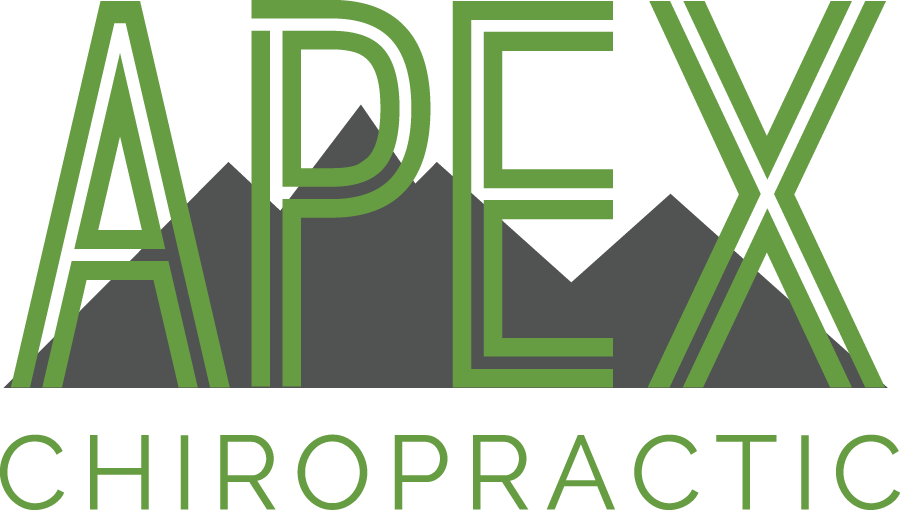It’s difficult when you’ve sustained a traumatic brain injury, or TBI, as you deal with the loss of function while trying to maintain your life. Unfortunately, most of the treatment options available have nothing to do with actually treating TBI, but simply managing the symptoms related to it. You’re told that you may recover fully if you only have a mild TBI. However, moderate and severe TBI often means you simply have to learn how to cope with it for the rest of your life.
Effective chiropractic treatment is giving traumatic brain injury patients some hope of a full or nearly full recovery. Discover what happens in your body with a TBI, the connection between your injury and your spine, and how chiropractic care provides consistent and measurable results.
Understanding What Happens in Traumatic Brain Injuries
Traumatic brain injuries occur when external forces damage the brain in some way. There are two different categorical types of TBI, including closed head injuries that lead to conditions like a concussion which results from car accidents, falls, or impact sports. Then you have penetrating brain injuries, where something external penetrates the skull and damages the brain.
Regardless of the type, there are varying degrees of injury, which doctors determine when you’ve sustained a force to the head and have at least one of the following:
- Loss of consciousness
- Amnesia regarding the traumatic event
- Skull Fracture
- Post-traumatic seizure
- Abnormal brain scan
Following a traumatic brain injury, your brain may experience several things, depending on the severity of the injury. Mild TBI may result in temporary injury to your brain tissue. More severe cases may include torn tissue, bruising, bleeding, increased intracranial pressure, neurochemical disruption, and disruption to neural plasticity.
Chiropractic Care Isn’t Just About Pain
Most people who think about chiropractic care think about seeking pain relief for their back and neck. However, that’s only a small microcosm of what chiropractic care is all about. Rather, the true focus of chiropractic care is the entire nervous system and ensuring it can work properly.
Think of the nervous system like the old can and string kids use to communicate or that’s used to demonstrate waves in physics class. Your brain is at one end and all the nerves running throughout your body are the lines running to the receiving end. When there’s an interruption in any of those communication lines, the systems in your body cannot function properly.
Spinal subluxations, which are commonly referred to as misalignments, interrupt those communication pathways. Correcting those subluxations allows proper signaling throughout the entire nervous system. This gives the body a stronger immune system, makes it more resilient against injury, and better capacity for healing.
The Connection Between TBI and the Spine
If a traumatic brain injury is the result of some external force impacting the head and injuring the brain, how is the spine involved? This is a great question, with some obvious and not-so-obvious answers.
The obvious answer is that a significant injury to the head will also likely result in a shock or jolt to the spine, especially the cervical region at the top. This can cause subluxations that interfere with the communication pathways we just discussed.
The less-than-obvious answer is the importance of blood, cerebrospinal fluid, and nutrients flowing to the brain. Cervical subluxations may restrict all of these, starving the brain of some of what’s needed to heal. That’s why resolving these cervical structural shifts is important for readying the body to heal from a TBI.
How Chiropractic Care Treats Traumatic Brain Injuries
It’s easy to dismiss what you don’t fully understand, especially an injury as complex as a traumatic brain injury. However, once you understand how chiropractic care assists in the recovery process, you’ll see why it’s critical to make it a priority as you heal.
Restores Cerebrospinal Fluid Circulation
Cerebrospinal fluid, or CSF, is as critical to the body as the blood supply. The brain produces this special fluid, which then circulates along the spine. It’s thought that it serves the purpose of transporting vital nutrients throughout the brain and spine, helping to transport chemical signals for your nervous system, and removing waste from the brain.
The subluxations of the cervical spine that often accompany traumatic brain injuries can restrict the flow of CSF, which can range from minor to severe. Minor CSF restrictions inhibit effective chemical messaging throughout the body. It allows for a buildup of natural toxins in the brain and can cause issues like headaches and problems with hearing and vision. It can also lead to symptoms similar to ADHD, causing problems with focus and executive functioning.
Significant CSF restrictions can lead to excessive fluid buildup in the brain. This causes increased pressure in the brain, a potentially life-threatening condition known as hydrocephalus. You can see how critical it is to resolve CSF circulation.
Improves Blood Flow
Blood flowing to the brain is critical for normal cellular function, but also for recovering from a traumatic brain injury. Blood carries oxygen to the brain, which it uses to help send nerve signals and messages throughout the body. In fact, the brain accounts for about 20% of the body’s total oxygen consumption.
Cervical subluxations not only restrict cerebrospinal fluid but also blood flow to the brain. Minor blood restrictions can cause you to experience brain fog and difficulty concentrating. These symptoms are indicative that your brain is not getting enough oxygen to function normally, let alone work on the healing process. In fact, cerebral blood flow is one of the major contributing factors to systemic hypoxemia in TBI patients. Correcting cervical subluxations ensures you have adequate blood flow for the increased nutrient and oxygen needs of the recovering brain.
Restores Neuroplasticity
You’ve likely heard the term neuroplasticity at least in passing, which is the brain’s ability to form and reorganize synaptic connections. Your brain functions by making these neural connections as you learn. After your brain sustains an injury, it has to work on reorganizing and making new neural connections.
The subluxations that occur following a traumatic brain injury can restrict the brain’s normal plasticity, which exacerbates the damage from the injury. The restoration of blood and CSF flow to the brain helps protect its plasticity and your ability to recover full cognitive function.
Prefrontal Processing Improvement
The prefrontal cortex is on the outer layer of the front area of the brain. This area is responsible for:
- Decision making
- Memory
- Attention
- Intelligence
- Emotional response
- Processing pain
- Motor control
- Spacial awareness
If you injure this area of your brain as part of a traumatic brain injury, you may experience things like personality changes and higher cognitive deficits. A 2015 study that used EEG to record brain activity showed that spinal manipulation increased prefrontal activity.
Not All Chiropractic Care Is The Same
Chiropractic offices continue to pop up all over the place, from large cities like Denver to smaller towns like Louisville. Does it matter what chiropractor you see for the treatment of your traumatic brain injury?
All chiropractors receive training in how to solve the spinal subluxations that interfere with TBI recovery. However, some patients do not tolerate the kind of adjustments that are common with spinal manipulation, where the chiropractor exerts a force with their hands.
This is where the Torque Release Technique®, or TRT, proves helpful. Unlike many other adjustment approaches, the TRT solely relies on force delivered through a device called an Integrator, which is the only FDA-approved chiropractic instrument. This approach allows your chiropractor to make more accurate adjustments in a shorter amount of time that provides longer lasting results.
Patients should be careful of confusing chiropractors who use an activator with those using the Integrator. While they are similar, the Integrator is more precise, providing repeatable amounts of force. This technique also addresses the tone and tension of the nervous system, which further amplifies the nervous system’s signaling capabilities.
Call to schedule your initial Louisville area traumatic brain injury consultation with the experts at Apex Chiropractic.

Ready to See the Best Chiropractor in Louisville, CO?
Apex Chiropractic believes in thriving through life, not suffering in it. We believe that the activities that we want to partake in do not only desire but are necessary, just as necessary as our daily activities. In order to thrive in life and not suffer, we have to be completely in tune with our bodies. Schedule your appointment with us, today.
Like this article? Spread the word!
Related Posts
April 17, 2023
Could The Three T’s Be Causing Abnormal Stress in Your Life?
If you don’t have a firm understanding of why people get sick, then you will never grasp…
September 12, 2022
3 Reasons to Choose Chiropractic Care for Thyroid Conditions
Thyroid conditions can cause a multitude of health issues. What you might not realize is…
September 12, 2022
7 Benefits to Seeing a Chiropractor for Knee Pain Treatment
If you are dealing with pain issues related to a knee problem, you always have the option…





